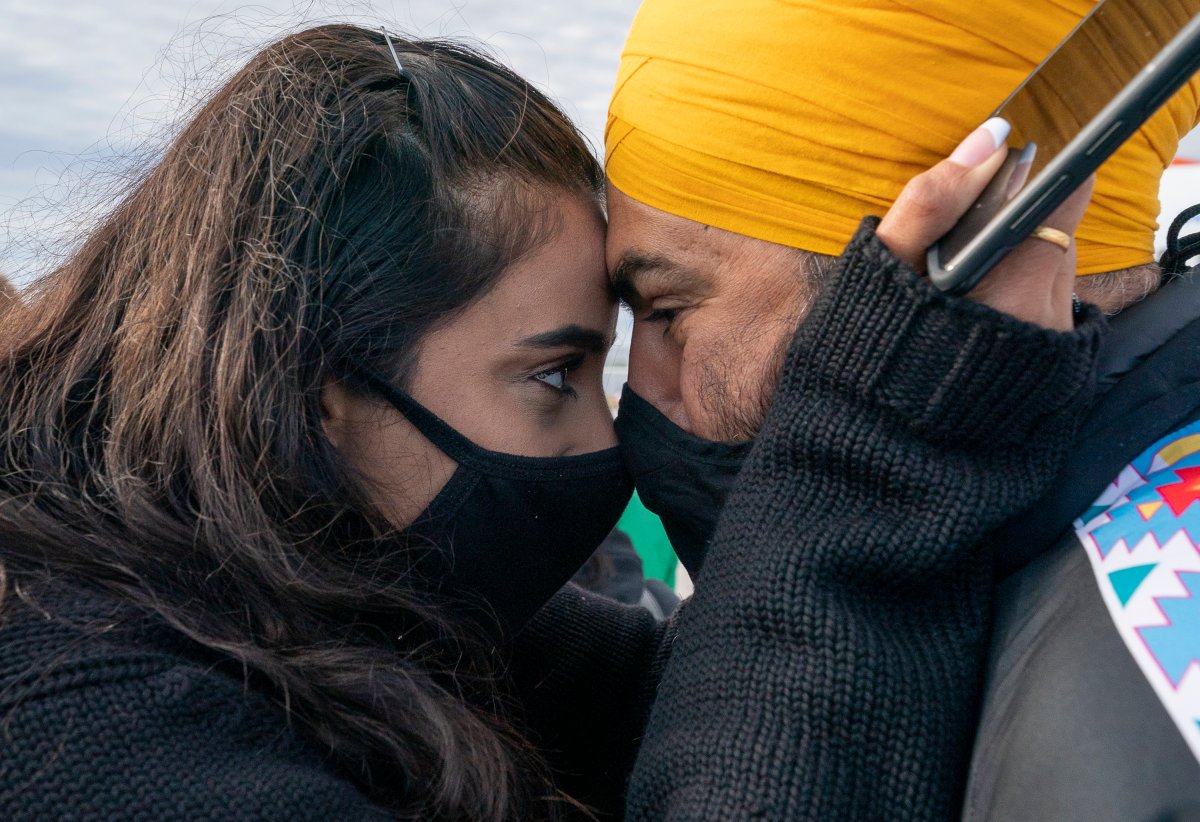I run my own seat model and, as of Monday morning, it had aggregated data from seven different pollsters who, cumulatively, have asked more than 13,000 Canadians in the last week how they’d vote.

Plugging that aggregated data into my model, it looks like the country’s 44th general election will be a repeat in many ways of the 43rd general election: Liberals will win the most seats but lose the popular vote to the Conservatives.
Here’s the seat prediction my model has at this point: Liberals (LPC) 146, a loss of nine seats vs dissolution; Conservatives (CPC) 122, a gain of three seats; NDP 43, a gain of 19 seats; Bloc Quebecois (BQ) 26, a loss of six seats; Greens (GPC) one, a drop of one.
A party needs 170 seats for a majority in Canada’s 338-seat House of Commons.
The aggregated popular vote in my model right now — again, the model has the vote intentions of 13,527 decided or leaning voters — is CPC 32 per cent, LPC 31 per cent, and NDP 21 per cent.
That’s pretty much like 2019 when the Conservatives won the popular vote, but did not win the most seats. In 2019, the popular vote was CPC 34 per cent, LPC 33 per cent, and NDP 16 per cent.
The closest race in my model? Right now, it’s the PEI riding of Egmont, where incumbent Liberal candidate Bobby Morrissey would lose to Conservative challenger Barry Balsom by just six votes!
But there’s a lot of close races in my model. I have 47 races in which the difference between first and second is less than five per cent of all votes cast and another 39 races where the difference is between five and 10 per cent.

Get breaking National news
You can bet that each campaign has identified those tight contests and will be zeroing in on their close races this week with extra campaign staff and maybe even a leader’s visit.

For what it’s worth, senior Conservative campaign officials were telling their partisans Monday that their own internal party seat predictions have them winning between 135 and 145 seats. Does that mean they’d win? Well, if the Conservative war room thinks it can win 145 seats, that’s definitely in (weak) minority territory. But if the CPC war room thinks the low end is 135 seats, it’s hard to see a scenario right now where just 135 seats puts you on the government side of the House.
I think that even 135 seats is a bit optimistic for the Tories right now, but that’s the message the Conservative war room is sending out as the week begins for Tory candidates and volunteers on the hustings.
More interesting, messages from senior Conservative war room officials to campaigners say that some of the public polling purporting to show the People’s Party of Canada (PPC) in the double digits is too high. CPC internal polling, according to a Conservative Party source, has the PPC polling at around 5 per cent nationally.
The CPC war room pollster is also finding that about 25 per cent of those telling pollsters they’ll vote for Maxime Bernier’s PPC voted Green in 2019! Again this is from a source with knowledge of what senior CPC war room officials are telling their own campaigners.

In any event, a Liberal minority is not what either the Liberals or the Conservatives wanted, though a minority of any stripe is exactly what New Democrats or Bloquistes would like. The Liberals wanted a majority; the Conservatives wanted at least a minority.
A Liberal minority may spark a grassroots push in both the Liberal and Conservative parties to have a leadership discussion. Liberals will be unhappy with Justin Trudeau’s inner circle for blowing a big pre-election lead in the polls and winning only a minority again while the Conservatives will be upset their man isn’t the prime minister.
There’s a lot of interesting stories in this campaign but one of the big ones for me is the rebound of Jagmeet Singh and the NDP. Could they really add 19 seats to vault over the BQ to be the third party in the House of Commons? And could their popular vote climb from 16 per cent in 2019 to 21 per cent?
That could be significant in, say, a minority Liberal Parliament where Liberals might be sorting out some leadership issues. The NDP might end up with a stronger hand when it comes to negotiating their way to support a budget or other confidence measures.
All of that said, there’s still a long way to go. Campaigns matter. And the big wildcard will be turnout.
It is, after all, a pandemic election. And we will be watching to see if one party or another has more or less trouble getting out their vote.
David Akin is chief political correspondent for Global News.









Comments